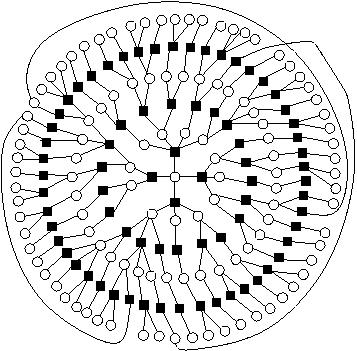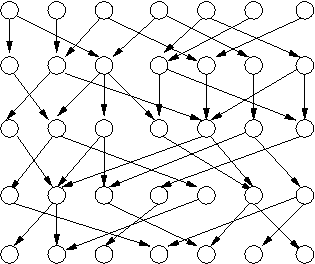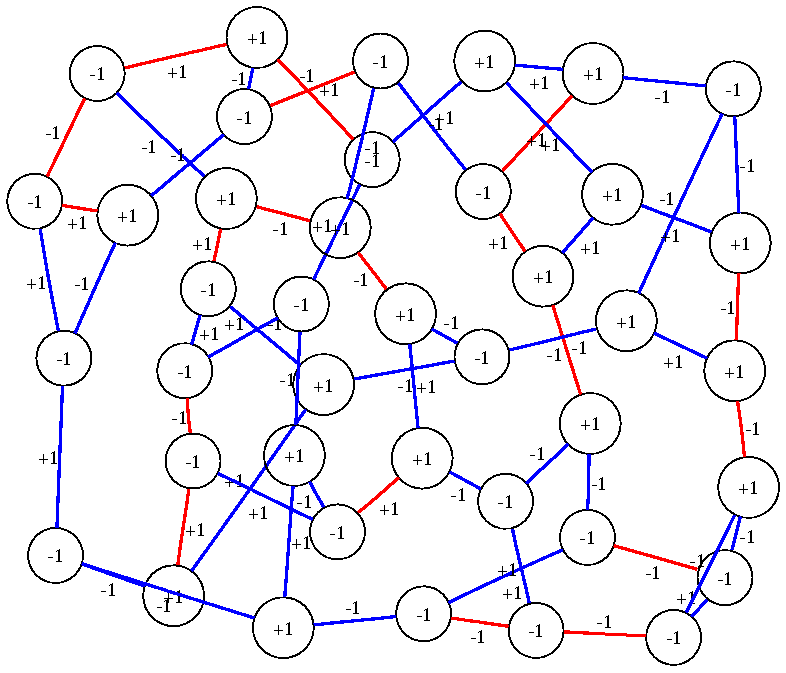ICML-2008 Tutorial: Saturday, July 5, 2008
Graphical models and variational methods: Message-passing and
relaxations
Tutorial presenter: Martin Wainwright,
Assistant Professor,
Goals and summary
Graphical models provide a flexible framework for capturing
dependencies among large collections of random variables, and are by
now an essential component of the statistical machine learning
toolbox. Any application of graphical models involves a core set of
computational challenges, centered around the problems of
marginalization, mode-finding, parameter estimation, and structure
estimation. Although efficiently solvable for graphs without cycles
(trees) and graphs of low treewidth more generally, exact solutions to
these core problems are computationally challenging for general
graphical models with large numbers of nodes and/or state space sizes.
Consequently, many applications of graphical models require efficient
methods for computing approximate solutions to these core problems.
The past decade and a half has witnessed an explosion of activity on
approximate algorithms for graphical models.
The goal of this tutorial is to provide a unifying roadmap for
navigating and understanding the broad array of approximate algorithms
for marginalization and learning in graphical models. This tutorial
will show how a wide class of methods----including mean field theory,
sum-product or belief propagation algorithms, expectation-propagation,
and max-product algorithms----are all variational methods, meaning
that they can be understood as algorithms for solving particular
optimization problems on graphs. The perspective also forges
connections to convex optimization, including linear programming and
other type of conic relaxations.
Presenter's background
Martin J. Wainwright is an Assistant Professor at UC Berkeley,
with a joint appointment between the Department of Electrical
Engineering and Computer Sciences, and the Department of Statistics.
His research interests include statistical machine learning,
information theory, statistical signal processing, and
high-dimensional statistics. He received a PhD in EECS from the
Massachusetts Institute of Technology, with a thesis focusing on
graphical models and variational methods, for which he was awarded the
George M. Sprowls Award for outstanding doctoral dissertation. He has
received several awards, including a Sloan Fellowship, an Okawa
Research Fellowship, an NSF CAREER Award, and various conference paper
awards. He has worked extensively on graphical models,
message-passing and variational methods, given various invited talks
and tutorials on the topic, and taught a graduate level course in the
area at UC Berkeley.
Martin Wainwright's webpage
Outline
The tutorial will begin with a quick introduction to graphical models,
before moving onto exponential families and variational formulations.
Various classes of approximate inference algorithms will be derived
from the variational perspective, including belief propagation,
expectation-propagation, mean field, and various convex relaxations.
Basics of graphical models
- Directed models, undirected models, factor graphs
- Marginalization, MAP problem, parameter/structure learnin
- Exponential families and maximum entropy
- Mean parameters and global validity
Bethe-Kikuchi, sum-product, and expectation-propagation
- Bethe approximation and belief propagation
- Kikuchi clustering and generalization
- Expectation-propagation
Mean field methods and learning
- Naive and structured mean field
- Variational EM and Bayes
LP relaxations, max-product and other convex relaxations
- Basic tree-based LP relaxation
- Reweighted max-product and LP duality
- Higher-order LP relaxations
- Conic programming relaxations (SOCP, SDP etc.)
Tutorial slides
Slides (PDF)
Slides (2 per page) (PDF)
Intended audience
The literature on message-passing and variational methods can be
difficult to navigate at times, since it draws on a large number
of different areas (optimization, statistics, AI, physics etc.). The goal
of this tutorial is provide a guide to this area, so that researchers
in machine learning can better understand and implement existing
methods, and also tailor variational methods to particular applications
of interest.
We assume a familiarity with the basic concepts of graphical
models (graphs, probability distributions, conditioning, independence,
Markov properties). Those in need of a refresher can consult the
lecture notes and videos available on-line (see Background materials below).
Background and auxiliary materials
Machine Learning Summer School, Taipei, August 2006
Lectures on Graphical Models and Variational Methods.
- Introductory lecture:
Part I
- Advanced topics:
Part II
Tutorial papers and book chapters
Graphical models and variational methods (Wainwright and Jordan, 2005):
Book chapter
Graphical models and variational methods (Wainwright and Jordan, 2003):
The "Monster" technical report





